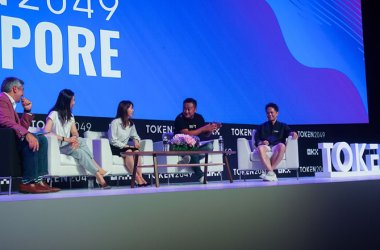He arrived at Infor just under two years ago, equipped with a brand new team as well as a lifetime of experience which he claimed was critical to breaking the stronghold of his competitors. Now, CEO Charles Phillips is revelling in the recent glory of Infor. Having just moved offices into the heart of New York and kick started the next generation of application integration, the Arkansas man is on a roll.
How have your first two years been at Infor?
We’ve had a blast. I brought with me a tightly linked team which works well together. Having the guys I chose personally has been really beneficial. I’ve worked at Oracle, which is a fantastic company, and I’ve worked in plenty of other sectors too, I’ve seen the industry from lots of different angles so I brought with me a huge amount of experience.
How do you see Infor’s presence in the Middle East?
We’re doing very well in the Middle East right now. We’re seeing a particular success in healthcare. We already have about a 70% share of all hospitals in the US; surgical instrument management, food management, hosts of things, so we have a strong knowledge in this sector. The healthcare system in the Middle East is going through radical change, more so than anywhere else. There are world class hospitals being built, and for us it’s an amazing opportunity.
This hard work was, of course, rewarded by you with an ICT Achievement Award for Healthcare Deployment of the Year.
What is your strategy here, do you work directly on the ground or mainly with partners?
In any given year, about a third of our business goes to our partners. However, we want more feet on the street. One way to do that is to keep up good relationships with partners locally. It’s critical – no matter how many people we hire we can never hire enough to cover all the opportunity. Partners have unique relationships with customers which we can benefit from. We’re always looking for more partners.
The partners are critical for us outside of the US. We have long lasting relationships inside the US but when we step outside, our partners become more and more important to our penetration.
How do you see the market at the moment?
It’s a great time to push in this region. The partners we’re signing now don’t want to go through legacy and training on older product bases such as Oracle or SAP, our new products are easy to use, learn and quick to implement so it’s a good time to be active in a fast moving region such as the Middle East.
It’s a little easier for us here because we’re relatively new – we didn’t have the old middleware and didn’t have to carry that with us so for a new partner they can skip those generations. Those sorts of details have helped us here and generally all over.
Can you elaborate on the next-gen integration technology?
We recently built a next generation integration platform. We took an internet based approach to integration. It’s exponentially simpler than traditional middleware, which works for our purposes. The problem with application integrations is that when you change one thing, 500 other things break. We’ve solved that with this.
How should the next generation of business applications be delivered?
The next generation user will demand beautiful products. They will want to work on platforms and applications which are similar to those which they use in their personal time. Creating socially inspired working applications will promote easier tasking, better productivity and happier employees. We have developed our unique social business platform – reinventing our applications to look beautiful, integrating social media with business for the future users.
They’re used to consumer products. We’re making the step of pushing it now and moving that chapter forward. If you look at Twitter or Facebook, this is how our applications will look soon enough. We’re about 3-5 years ahead of our competitors and we will drive this move and others will have to react. Unfortunately for them, they have big architectures and so they won’t be able to change anything quickly. It’s not just about having the social platform; it’s embedding it into the context of the application. It’s pretty invasive, but this is the time for disruptive technology and we want to be the disruptive alternative.






